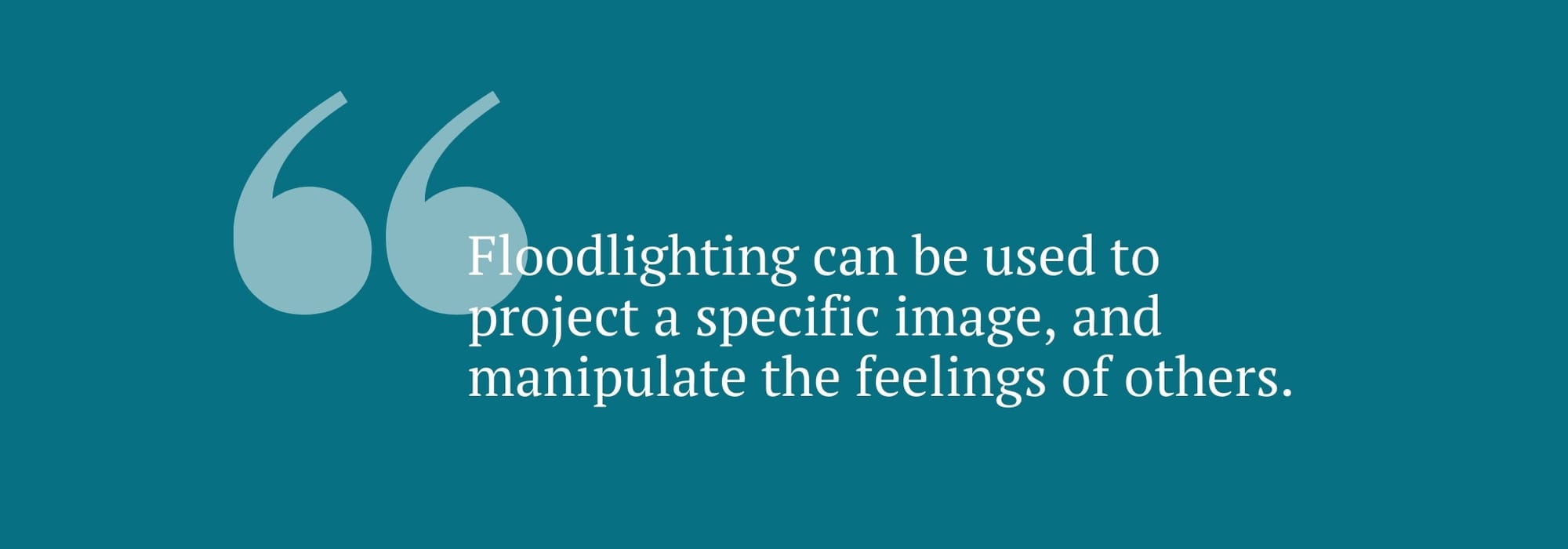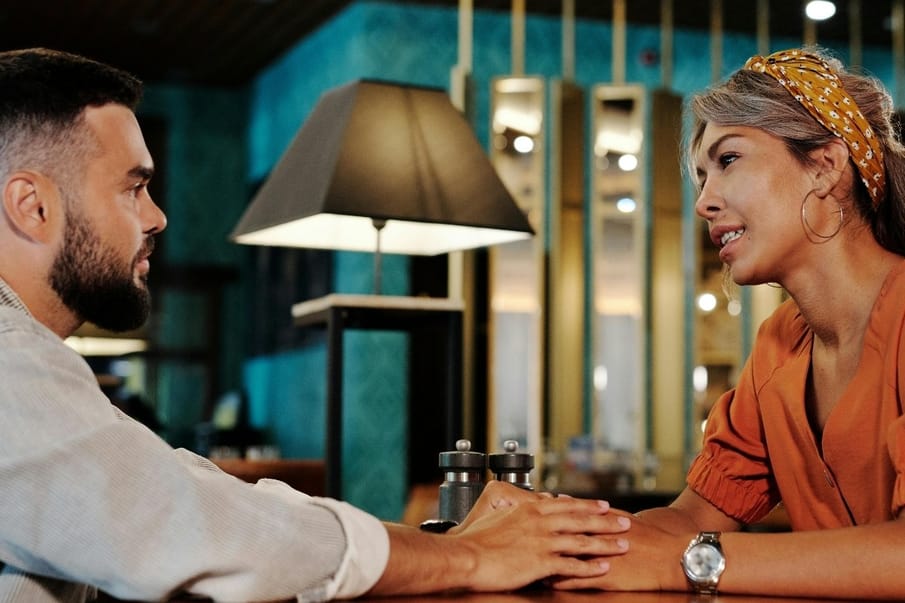We investigate how ‘floodlighting’ in relationships can actually be manipulation masked as vulnerability…
You’ve just finished a dinner date with someone who seems perfect – attractive, interesting, and refreshingly open. Within minutes, they shared deeply personal stories about their difficult childhood, recent breakup, or family trauma. You felt an immediate, intense connection. Here was someone brave enough to be vulnerable.
But, on the way home, something feels off. Instead of the warm glow of a promising first date, you feel exhausted. Your mind is spinning with everything they offloaded, and you’re already wondering how you can help them through their struggles.
That spark? It might not have been chemistry after all. You may have experienced ‘floodlighting’ – a dating behaviour that involves overwhelming someone with personal revelations to create a false sense of intimacy. And, like being caught in actual floodlights, the initial brightness can leave you feeling disoriented once your eyes adjust to what’s really happening.
What is floodlighting?
From catfishing to cuffing season, there are so many dating terms out there that it can be tempting to pathologise any unusual behaviours as toxic. The truth is most of us have experienced innocent oversharing; perhaps you spilled your heart out to a stranger after a breakup, or offloaded a traumatic memory to a colleague. But there are elements to floodlighting that are more manipulative.
“The person essentially throws their trauma at you from the start, often to hook someone who has experienced their own hardships,” says integrative counsellor Donna Whitbread. “This fast-paced emotional sharing can create a false sense of closeness and trust, before a genuine bond has had time to form.”
Floodlighting is normally used to create a connection through shared vulnerability, and happens very early in a relationship. “Unlike other manipulative tactics that develop slowly and subtly, floodlighting is intense and immediate,” notes Donna.
In the context of dating when a relationship hasn’t yet formed, oversharing isn’t necessarily the main problem. The real issue is the underlying intention to force an unnatural connection.
Why it causes issues
Not everyone will be drawn in by floodlighting, in fact, for some people it may be the red flag that takes a second date off the cards. But, for others, this sharing of emotion can create a dynamic that makes them feel somehow responsible for offering support.
“When someone constantly shares their trauma, whether real or exaggerated, it can cast them as a victim in need of saving,” explains Donna. “In response, the other person may unconsciously take on the role of rescuer or caretaker. This imbalance can blur boundaries, leading the other person to feel a growing sense of obligation or emotional responsibility.”
If someone’s oversharing is making you feel anxious or under pressure to respond in a way that you don’t feel comfortable with, you’re likely being floodlit.

Why do people do it?
For many people, floodlighting is a defence mechanism that, confusingly, ends up acting as a barrier to reciprocal intimacy. “This oversharing of trauma or emotional pain can act as a form of disguise. By constantly focusing on their struggles, they prevent the other person from truly getting to know them,” says Donna. By shining the light on the hardships they’ve faced, it may feel like the rest of their identity can remain safely in the shadows, away from any potential judgement.
The floodlighter may also use oversharing as a way to get what they want from the other person, fast-tracking the process instead of letting things unfold at a slower, more natural pace. “Floodlighting can be used to project a specific image, and manipulate the feelings of others,” says Donna. “If someone is primarily interested in getting what they want – whether that’s attention, sympathy, or control – floodlighting becomes a quick way to connect with emotionally vulnerable individuals.”
Spotting the signs
Some of the best introductions consist of honest admissions. But how can you tell the difference between this and floodlighting? According to Donna, there are some key questions you can ask yourself: “Does the interaction feel mutual and comfortable, or does it feel one-sided? Is this person genuinely interested in learning about you, or are they mostly focused on telling their own story?”
Meaningful connections involve presence, balance, and shared attention. “After a meaningful interaction, you should feel seen, heard, and perhaps even uplifted,” says Donna. “But if you walk away knowing only about their trauma and nothing about their values, personality, or interests, it may be a sign that they’re hiding behind their vulnerability, instead of letting you see their whole self.”
If you suspect someone has been floodlighting you, here are some more words of advice from Donna:
Change the topic
It can be helpful to have a few phrases in the back of your mind to gently redirect the conversation. For example: “I appreciate you sharing that. I’d love to hear more about your hobbies/pets/work, etc.”
Zoom out from their trauma
Take a moment to think about how much you really know about them. Do you know anything other than their trauma or hardships? If not, the emotional intimacy you feel may not be genuine.
Post-date debrief
Check-in with how you feel after spending time together. “Do you feel emotionally drained or burdened with a sense of duty? Or do you feel heard, supported, and energised?” asks Donna. “If it’s the former, there may be manipulation at play.”
Reflect on the basis of your connection
Do you get the sense that they are interested in you as a person, or do you feel the connection is based on bonding over trauma? While genuine relationships can certainly include that bonding experience, they also involve learning about each other’s full selves, not only the painful or traumatic parts.
Set emotional boundaries
Not all forms of oversharing are cause for concern, but if you start to feel overwhelmed by their emotional intensity, Donna says it’s OK to slow things down, or step back. “You have a right to protect your emotional wellbeing, and ensure that trust and intimacy develop at a healthy pace.”
Turning off the light
Whether you’re under the spotlight or shining it, remember, there is no shortcut to genuine emotional intimacy. Real connection builds through shared experiences, mutual interests, humour, values, and yes, appropriate vulnerability – but balanced with learning about each other over months, or even years.
When you encounter a vulnerable moment with someone new, ask yourself: “Is this sharing rooted in fear or authentic connection?” Only by developing this awareness can you create the foundation for relationships built on genuine understanding, rather than trauma bonding.


Comments